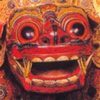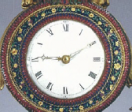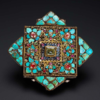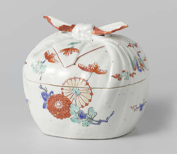MELISSA WALT

ON APRIL 1st, 1948, Zao Wou-Ki arrived in France after a journey from Shanghai lasting thirty-three days. Zao could not have known then that the two years he planned to spend in France would stretch into a lifetime, or that he would emerge as a modern master of abstraction, heralded for his inventive and nuanced explorations in oil painting, Chinese ink, watercolour and printmaking. Zao was a young painter and art teacher in 1948; by the time of his death in 2013, he was regarded as one of the first superstar artists of the Chinese diaspora whose successful career, preceding by nearly a half-century, laid the path for artists like Ai Weiwei, Cai Guo-Qiang and Xu Bing.
“No Limits: Zao Wou-Ki” marks the first retrospective museum exhibition in America in nearly fifty years for this pivotal artist. Zao, whose life and art spanned two cultures, played a crucial role in 20th century international abstraction. Organised as a joint project of the Colby College Museum of Art, Waterville, Maine, and Asia Society Museum, New York, the exhibition highlights fifty objects, covering seven decades of Zao’s prolific professional career. Drawn from public and private collections on three continents, some of the works are being exhibited for the first time. A fully illustrated catalogue accompanies the exhibition, and includes contributions that deepen our understanding of Zao Wou-Ki and his art. Essays on the interplay of media in Zao’s work and his reception in America draw on extensive archival research; others examine Zao in the context of Abstract Expressionism, and through an intimate, familial lens.

The five parts of “No Limits: Zao Wou-Ki” analyse Zao’s art historical significance in four sections of oil painting and one of works on paper. The title of each section draws its organisational concept from Zao’s own words. The first three sections trace the development of themes in his oil painting. “To Learn is to Create” focuses on early paintings from 1945–1954; “Calligraphy is the Starting Point” explores the role of Chinese calligraphy in the evolution of the artist’s visual geography; while “Painting the Invisible” shows Zao giving visual form to non-visual phenomena. The fourth section, “A Place to Wander”, presents the fully abstract images that mark the artist’s mature period. Besides his works in oil, Zao maintained a vigorous artistic practice in other media, producing a large body of works on paper through etching, aquatint, lithography, watercolour and Chinese ink. This section also includes a number of the artists’ books that Zao produced in collaboration with his wide circle of literary friends and acquaintances.
Born in Beijing in 1920, Zao Wou-Ki was the first-born in a family that would eventually number seven children (1). He received his given name, Wou-Ki (無極), meaning “without limits”, from his paternal grandfather, a Confucian scholar of the Qing dynasty (1644–1911), who bestowed upon his grandson a name redolent of Daoism. The characteristics that came to mark Zao’s artistic contributions—his deep understanding of Chinese and European cultural traditions, and the ease with which he negotiated them—had their roots in Zao’s childhood. Within months of his birth, the family relocated to Nantong, near Shanghai, which was a “model” modern city that boasted many Western-style amenities and institutions—an urban archetype of the myriad forces contending in China during the first decades of the 20th century. The same forces—modern and traditional, Chinese and European—shaped Zao, too. His education, for example, included Western-style curriculum at school; while at home his grandfather oversaw a traditional Chinese curriculum, which included the Confucian classics and calligraphy. Zao learned early to move deftly between the realms that he inhabited.

In 1934, the Zao family relocated to Shanghai, China’s most modern and cosmopolitan city, where the family moved into a new contemporary home in the city’s International Settlement. The following year, Zao made the first of many major relocations of his own life—to nearby Hangzhou and the art academy. From childhood, Zao Wou-Ki showed artistic inclinations, and a precocious commitment to making art his career. In 1935, at age fifteen, Zao enrolled at the National Hangzhou Art Academy. The academy was China’s most progressive fine arts school, then under the direction of Lin Fengmian. Zao spent six years as a student there, learning both Chinese and Western techniques. His teachers included Lin and Wu Dayu, whose own experiences came to have a profound effect on Zao. Both artists had studied painting in Paris in the early 1920s, and through their works sought to reconcile elements of Chinese and Western art. Paintings from Zao’s student and postgraduate years in China show the degree to which he shared his teachers’ interests—he preferred to paint with oils and often looked to Cézanne, Matisse, Picasso and Modigliani as his models.
The Sino-Japanese War of 1937–1945 upended life in China, and Zao’s privileged upbringing did not shield him from the uncertainty of those perilous years. As hostilities with Japan increased, China witnessed a mass migration of the populace, as millions sought a degree of security by moving to the country’s interior. The faculty and students of the art academy relocated to the relative safety of Chongqing in Sichuan province, where Zao spent the remainder of the war years. After graduating in 1941, Zao became a member of the academy’s teaching faculty. In Chongqing, he taught, painted, mounted his first exhibitions, and made important connections that shaped his future and career.
Zao returned to Hangzhou with the academy after the end of the war, but his sights were set on Paris, and on February 26th, 1948, Zao and his wife, Xie Jinglan, sailed for France. The course of their two-year adventure was altered by the shifting realities of post-1949 China. Zao’s father urged his son to remain in France, even though doing so came at considerable personal cost—especially in the separation from his young son, who had remained in China with Zao’s parents.

In Paris, Zao moulded his singular career between two cultures. He threw himself into the experience: French language lessons, drawing classes at La Grande Chaumière, and visits to museums and galleries filled his days. Zao also painted and experimented with new media, trying his hand at lithography and etching. Almost immediately, he connected with a number of influential circles that included artists, intellectuals and dealers. The expansive and cosmopolitan atmosphere nourished him, and provided valuable encouragement and connections (2). Success came quickly. Within months of arriving, Zao participated in his first group show and won a drawing competition. It took only a year before he had his first solo exhibition, whose catalogue included an introduction by Bernard Dorival, curator of the Musée National d’Art Moderne. The course of his career was set and the trajectory was steep.
To Learn is to Create
Early paintings reveal Zao drawing inspiration from diverse sources, traditions and materials. Spanning the years 1945–1954, “To Learn is to Create” offers works from Zao Wou-Ki’s postgraduate years in wartime Chongqing and post-war Hangzhou, through his first years in France.

As a student at the art academy and then a faculty member there, Zao took inspiration from a variety of Western influences. Post-Impressionism and modernism were of particular interest, and early works from China show him working his way through a virtual catalogue of Western stylistic idioms. Even so, Chinese elements found their way into his oeuvre in a way that underscores the complex visual landscape that he was developing.
Tennis Players from 1945 is one of Zao’s rare extant works painted in Chongqing (3). Even during wartime, it seems, Zao’s favourite sport was not far from his mind, and in Tennis Players, he turned to tennis to experiment with some of his developing ideas. Tilted ground planes, spatial disorientation and the wraith-like players themselves, all enhance the painting’s dream-like quality. That Zao admired such effects in the works of European modernists, like Marc Chagall, is unmistakable. Untitled (Wedding) (4), for instance, from 1941, evokes Chagall in its rich colours, ethereal feeling and defiance of pictorial logic. But Zao found inspiration in Chinese sources as well. In 1944, he viewed Zhang Daqian’s landmark exhibition of Dunhuang copies. Zhang’s exhibition drew attention to the remote site and its vast collection of Buddhist mural paintings. Zhang’s painted copies offered glimpses of the inventive ways in which the Dunhuang artists dealt with space, perspective and narrative content—the very principles Zao explores in this painting.

Soon after painting Tennis Players, Zao left Chongqing when the art academy returned to Hangzhou. This was a homecoming of sorts to the place where his artistic journey began. In 1946, though, he was a faculty member with his wife and young son in tow. Hangzhou, renowned for its scenic beauty, has inspired poets and painters over the centuries, and Zao was no exception. The beauty of West Lake mesmerised him: “I watched for hours the passage of air over the calm water, the wind stirring the leaves of birches and maples” (Zao, p. 26). But for Landscape in Hangzhou, Zao elected to paint the lush scenery of the surrounding hills, in a painting that once again exposes the multiple influences at work on him (5). Zao’s admiration for Cézanne dated to his teens, as evidenced in Untitled (Still Life with Apples) from 1935–1936 (6), a youthful tribute to the French painter. For Landscape in Hangzhou, though, Zao turned his Cézanne-inflected eyes upon the nearby landscape. Amidst the hills, famously dotted with pagodas and temples, Zao painted a rather ordinary scene: hills, trees and a simple white-washed building—a teahouse or restaurant, perhaps. A sign on the building’s tile roof reads “Lake View”, in English.
The work recalls Cézanne’s own Provernçal landscapes in palette and composition, but the influence of Lin Fengmian can be credited as well. Lin was director of the academy when Zao enrolled, and it was his position that Zao filled after Lin’s departure from the faculty during the academy’s years in Chongqing. Lin’s goal as artist and educator was to reconcile Chinese and Western artistic traditions, and his works frequently featured Chinese vernacular architecture amidst Fauves-inspired landscape elements—characteristics evident in Zao’s Landscape in Hangzhou.
Calligraphy is the Starting Point
Calligraphy is the Starting Point” examines Zao’s use of Chinese calligraphy and brush techniques in the 1950s, as he searched for a path into abstraction. Zao commented sometime in the 1950s: “Calligraphy is the original source and only guide for my painting”. This revelation marks a pivotal moment in Zao’s artistic development—his acknowledgment of Chinese cultural traditions on his artistic DNA.

With his early mastery of calligraphy, Zao sought the challenge of other media, and found it in oil painting. And yet, it was to calligraphy that he returned in the early 1950s, as he sought his own artistic voice. As a child, Zao learned to read Chinese characters, and to write them using brush and ink, under the guidance of his grandfather. But the fresh eyes with which Zao began to view calligraphy owes much to Paul Klee. Zao knew of Klee through reproductions as a student in China, and saw Klee’s work first-hand on a visit to Bern in 1951. The poetic feeling and freedom of line that Klee achieved, and his interest in employing signs and glyphs, found their way into Zao’s works. Through him, Zao began to see how to mediate the artistic traditions of China. To do so, he turned to oracle bone script (jiaguwen 甲骨文)…
Click here to access Arts of Asia‘s September–October 2016 issue for the full article.

 Subscribe
Subscribe Calendar
Calendar Links
Links Gift
Gift

